SaaS Management: What It Is & 2025 Vendor Landscape

Every month, finance gets hit with another batch of SaaS invoices. IT sees a different mess: hundreds of accounts, unused licenses, and shadow tools no one remembers buying. Meanwhile, employees are stuck juggling logins, waiting on support, or using the wrong apps entirely.
The real problem? None of these departments have full visibility into the company’s SaaS spend. SaaS is easy to buy but hard to track. And when no one’s managing it, costs spiral, data leaks, and productivity takes a hit.
This growing chaos isn’t unique — it’s part of a global trend. Gartner estimates global SaaS spending hit $300 billion in 2025. IDC puts overall software spending in 2025 at $1.3 trillion.
This SaaS explosion has led to the rise of SaaS management techniques and, specifically, SaaS Management Platforms (SMPs) that do the heavy lifting for you.
In this guide, we’ll cover why SaaS management is important, how to start doing it today, and who the top SMPs in 2025 are.
Table of Contents
- What is Saas Management?
- Why do I need SaaS Management?
- What should a SaaS management plan include?
- Can I DIY Saas Management?
- Can I use legacy software tools for SaaS Management?
- How can I manage my SaaS, then?
- The top 5 SaaS Management vendors
What is SaaS Management?
SaaS Management is the process of discovering, managing, and optimizing software-as-a-service (SaaS) applications within an organization. By cataloging each subscription, tracking real‑time usage, and tying spend to actual value, IT and procurement can spot duplication, trim waste, and keep security reviews on schedule.
Beyond housekeeping, this discipline safeguards budget accuracy, speeds new‑hire setup, and curbs the risks of shadow IT. Mid‑size organizations often juggle hundreds of apps (indeed - companies in the 100-500 employee range average 536 apps according to Torii’s 2025 benchmark). Without a coordinated approach, costs swell and compliance gaps open.

Generally, SaaS management is accomplished via third-party tools called SaaS Management Platforms, which automate the discovery of shadow AIand other SaaS tools, alerts, workflows, and so on. But the concept of ‘SaaS management’ could also refer to manual tracking and Google spreadsheets.
Why do I need SaaS Management?
With every new tool added, the risk profile—financial, operational, and security-related—grows.
Wasted SaaS spend
If you have hundreds of employees, what are the odds that multiple teams have separate paid Notion accounts that could be merged? Or one team uses Asana and another Monday.com, and combining them would save costs? And what’s the likelihood you’re still paying for that ex-employee’s seat on Zoom?
These two problems - duplicate spend and zombie licenses (unused or orphaned licenses tied to former employees) - can cost companies hundreds of thousands a year. But without a clear-cut SaaS management strategy, who’s the owner? Is it the department heads tracking their teams, or the CFO tracking spend, or the IT team tracking tool usage?
Security risks
It’s fair to say that if employees are signing up for whatever tools they want, that your company will run into Shadow IT issues, which involves using tools that the IT/security team hasn’t approved.
While most SaaS tools aren’t malware, if a service isn’t approved - and especially if credit cards are involved - there’s the risk of malware, endangered PII data, and credit card theft. While one user adopts a known platform like HubSpot, others may try unvetted tools that fly under IT’s radar. There’s nothing inherently wrong with this (tools are tools for a reason), but without a SaaS management process in place, the odds of a security breach increases every month.
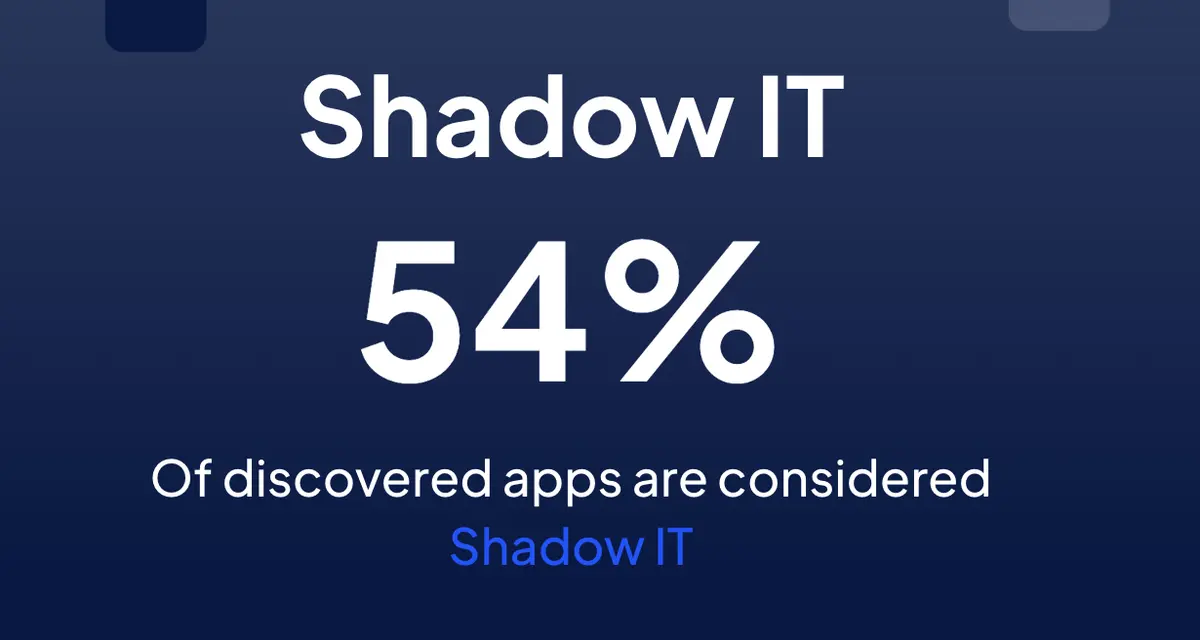
An overworked IT team
To address security risks, IT teams are usually tasked with maintaining access controls for employees. For instance, turning off Salesforce access if someone has left the company. On the flip-side, when someone has joined, the IT team may oversee the onboarding and access approval for all new hires.
While SSO tools like Google SSO or Okta can help prevent unauthorized access, they don’t monitor usage patterns or license wastage. The IT manager will still need to track this.
Or, if IT has discovered someone is using a new app, they have to manually reach out to the user and understand what it is. This is a thankless task that eats into their bandwidth.
Missed contract renewals
Imagine trying a tool on an annual contract and never finding value from it. You told yourself you would remember to reach out to cancel before the contract ends in six months. Inevitably, you forget. You finally get them to cancel it, but not before wasting hours and still having to pay a 25% buyout fee.
Now, imagine that across potentially hundreds of applications across thousands of employees. Without a SaaS management plan in place, these renewal windows will go missed.

What should a SaaS management strategy include?
A best‑in‑class SaaS program stands on four pillars: discovery, spend optimization, security, and workflow automation. Individually they solve distinct problems; together they turn every subscription, login, and byte of data into a measurable business advantage.
-
Discovery & Visibility: Before you can optimize or secure anything, you have to see it. This involves pulling spend data from corporate cards, parsing SSO logs, crawling browser extensions, and syncing vendor APIs. The result is a living catalogue that tells you:
- Which apps are in use, by whom, and on what plan
- How much each team actually spends, including expensed ‘credit‑card IT’ (tools purchased without IT oversight)
- Where sensitive data flows outside the core stack
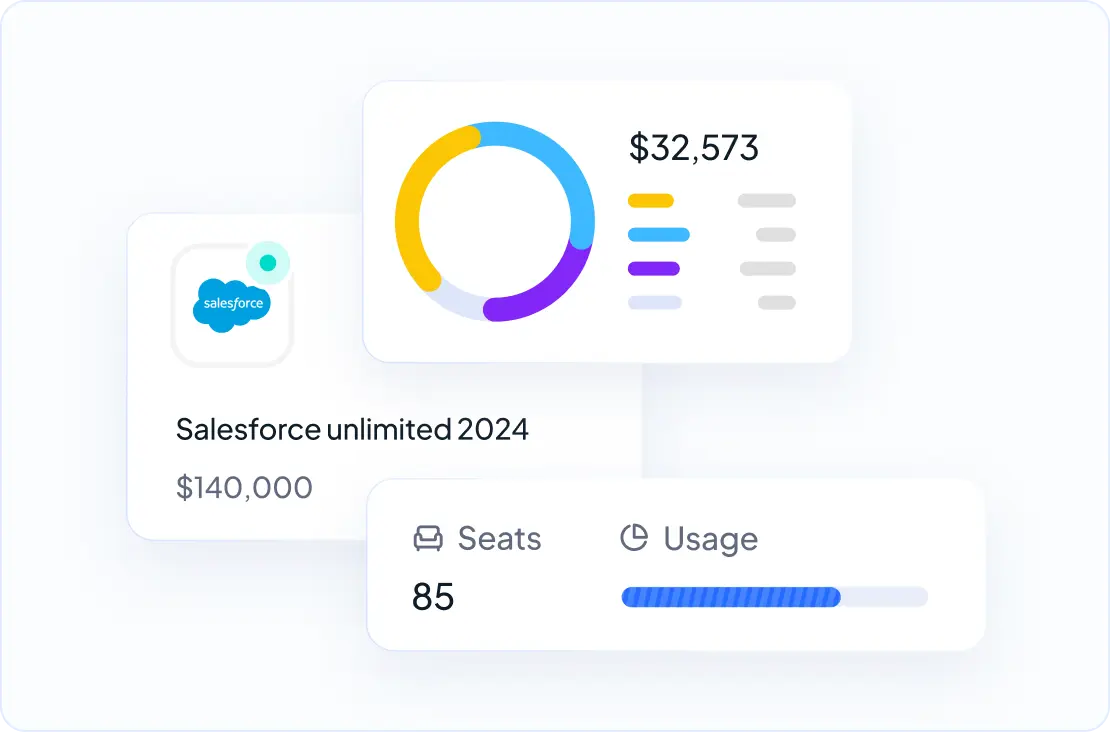
-
Spend Optimization: Insight without action still leaks cash. You’ll need to mine your discovered apps to identify:
- Dormant seats and orphaned accounts
- Duplicate functionality across tools
- Upcoming renewals with price‑increase clauses
Regularly auditing duplicate tools and unused licenses can save you thousands to millions a year.

-
Security & Compliance: Every unsanctioned domain widens the blast radius. A risk‑posture index grades apps on data scope, SSO/MFA status, vendor security attestations, and contract terms. This enables you to:
- Prioritize security reviews by actual exposure, not vendor size
- Prove MFA coverage during SOC 2 or ISO 27001 audits
- Auto‑quarantine apps that fail minimum‑viable controls
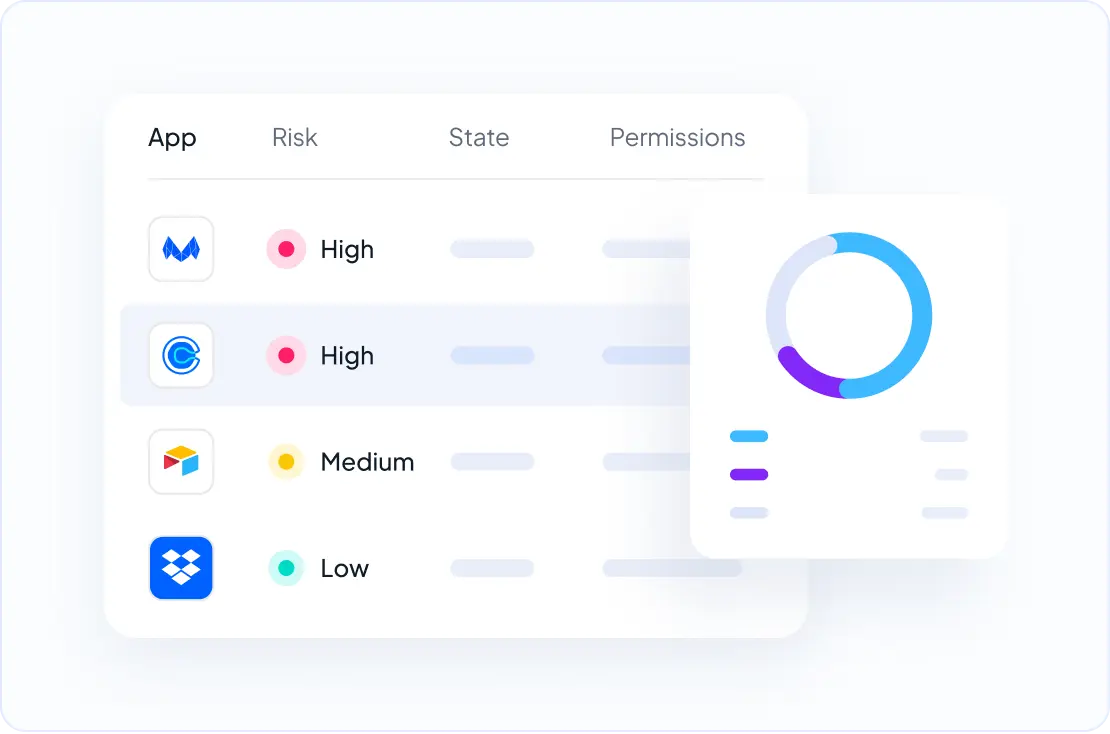
-
Workflow Automation: Manual provisioning holds back IT velocity. It’s important to automate SaaS lifecycle events, so that when an employee is hired, transferred, or off‑boarded, the right licences appear—and disappear—automatically. Benefits:
- New hires are productive on day one, not day five
- Finance gets real‑time cost deltas when seats are added or removed
- IT tickets for “access requests” virtually disappear, freeing engineers for higher‑value work
- Alerts are set up for upcoming contract renewals
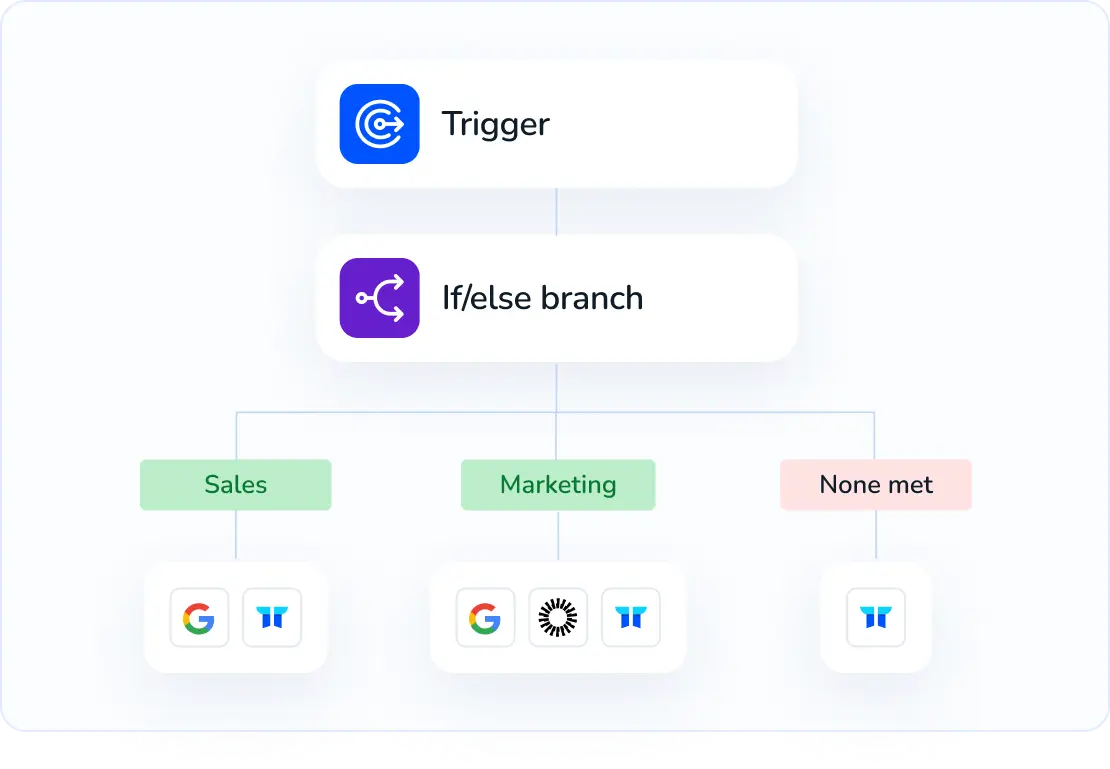
Here’s a visual of those four pillars and who they most impact:
| Pillar | C-Suite Lens | Core Output | Tangible Win |
|---|---|---|---|
| Discovery & Visibility | CIO | App inventory | $400K spend surfaced |
| Spend Optimization | CFO | SaaS Savings | 1.2% EBITDA lift |
| Security & Compliance | CISO | Risk index | Faster audits |
| Workflow Automation | IT Manager | Zero-touch flows | 160 support hours back |
What are the hidden costs of not having a SaaS management program?
The invoice total reflects only a fraction of the true cost of SaaS. Four hidden cost drivers account for the rest.
- Zombie licenses. Seats linger after role changes, time off, or departures. A 300-person firm paying $28 per Slack seat might carry 60 idle accounts, wasting $20,160 annually on unused seats.

- Duplicate tools. Marketing chooses Airtable, design goes with Monday.com, ops sticks to Smartsheet. Three workflows overlap at $12–$18 per user each month. Even with 40 shared users, the extra bill nears $8,000 a year.

-
Breach fallout. An app that bypassed security reviews raises incident odds. IBM put the average 2023 data-breach tab at $4.45 million. Even if just 1% of breach risk lands because of an unmonitored tool, the expected hit is about $44,500.
-
Context switching. Atlassian estimates a 9 percent productivity dip when employees juggle similar apps. For a $100,000 salary, that’s up to $9,000 in lost productivity per employee annually.
Add those up for a 100-person team and the “cheap” SaaS stack can drain more than $150,000 before the CFO spots the leak. For example:
| Item | Likelihood | Impact | Annual Cost | Owner | Mitigation Action |
|---|---|---|---|---|---|
| Zombie licenses | High | Med | $20,160 | IT | Quarterly review |
| Duplicate tools | Med | Med | $8,000 | Ops | Combine platform |
| Unvetted SaaS | Low | High | $44,500 | Sec | Add to SSO + MFA |
| Context switching | High | Med | $90,000 | HR | Standardize workflow |
Can I DIY SaaS Management?
If you’re a ten-person company with 20 total SaaS tools, then, yes. A Google Sheet would work fine. You might occasionally miss a renewal or delay an offboarding task, but those risks may not justify the cost of an SMP—yet.
But the risks of the spreadsheet approach increase substantially as your team grows. Even if you fully catalog your stack in February, will you check it weekly for renewal dates? Will you notice when employees sign up for tools they never report?

Can I use legacy software tools for SaaS Management?
A spreadsheet finds a line item here or there. SSO tracks sign-ins. SAMs are great for on-premise software. ITAMs can help with workflow automation.
But none of these historical tools are holistic solutions to the pillars identified above.
| Layer | Function | Who Covers It Well | What They Miss |
|---|---|---|---|
| Discovery | See every live app and user | SSO, CASB | Apps without SSO, shadow trials, card-based buys |
| Automation | Map rights to people or teams | SAM, ITAM | Real-time seat use, usage tiers, auto-renew terms |
| Control | Act on data, buy, cut, off-board | Expense tools, finance bots | Security posture, license swaps, workflow rules |
Rely on legacy tools and blind spots emerge quickly.
-
SAM (Software Asset Manager): Solid for Windows installs. Without live license meters, a quiet Slack workspace with 200 unused seats keeps burning cash.
-
ITAM (IT Asset Manager): Follows serial numbers and servers. Misses browser-only tools and freemium upgrades that flip to paid with no PO.
-
SSO (Single Sign On): Captures access events. Ignores per-seat cost and renewal dates; security enables MFA. Finance, meanwhile, keeps paying for former employees.
-
CASB (Cloud Access Security Broker): Alerts on risky data flows. Cannot renegotiate contracts or remove duplicate tools.
-
Expense systems (like Quickbooks): They alert you after the spend happens, when it’s too late to fix upstream problems like unused licenses or poor adoption.
What is a SaaS Management Platform?
A SaaS Management Platform (SMP) is a SaaS tool that offers you visibility and control over your company’s SaaS stack. These platforms connect to your existing IT, finance, and HR systems to monitor app usage, surface cost savings, reduce risk, and automate SaaS operations.
Unlike spreadsheets or point solutions, SMPs continuously map your entire SaaS ecosystem - tools, users, licenses, and spend - without manual upkeep.
SaaS Management Platforms address the four pillars above:
-
Discovery & Visibility: SMPs generally run agentless discovery across network, SSO, finance, browser extensions, and HR sources. They re-run in real-time, ensuring any new apps are unearthed.
-
Spend Optimization: Algorithms link every user, license, and cost center. Dashboards highlight duplicate tool usage and opportunities for reducing spend.
-
Security & Compliance: All tools are monitored and given risk ratings. Unauthorized and high-risk applications are surfaced immediately to the IT and security team for review.
-
Workflow Automation: SMPs have integrations with the individual SaaS tools, so that if you wanted to set a rule that any new employee would automatically get Notion and ChatGPT access, you could create workflows that automate those steps.
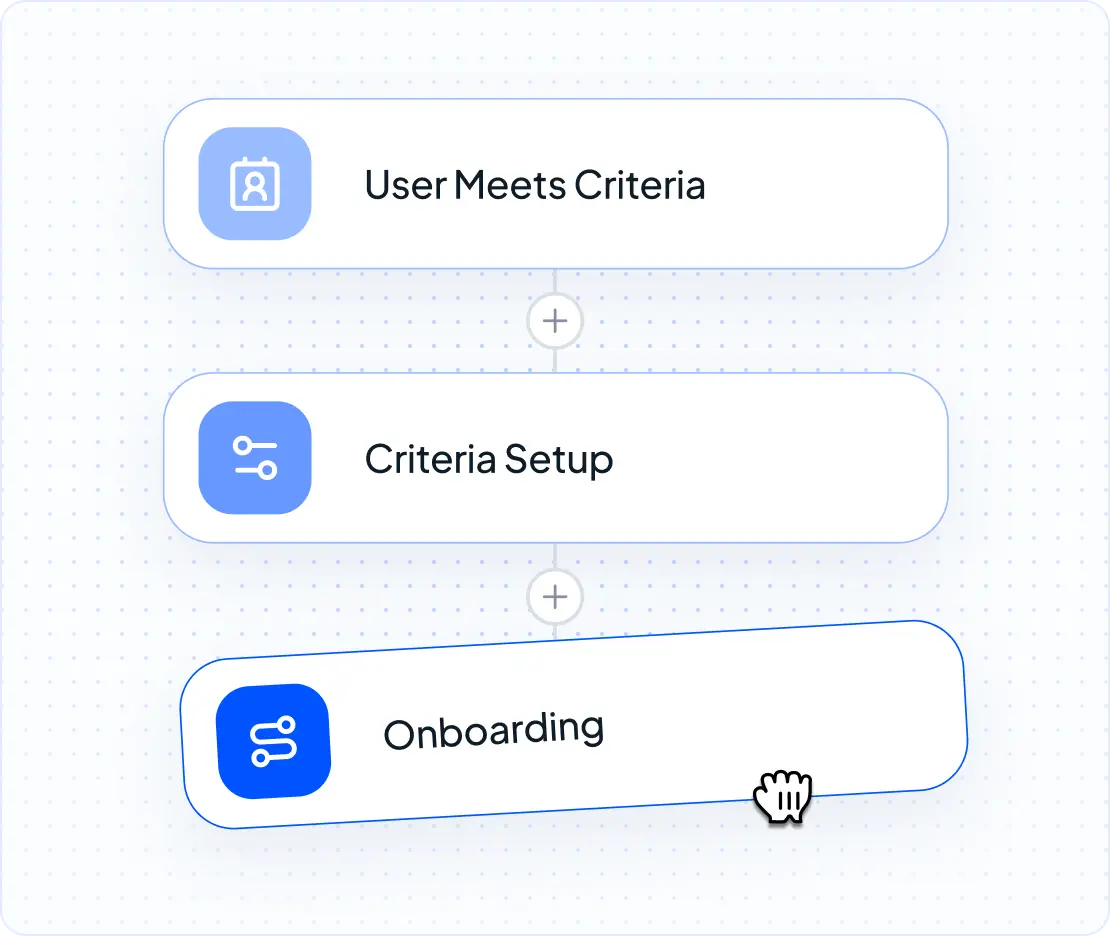
How do SMPs work?
A SaaS Management Platform pulls every subscription, license, and user into one dashboard. Instead of hunting through cards, spreadsheets, or payment gateways, teams open just a single UI. By combining the four pillars of discovery, spend, security, and automation into one console, an SMP turns raw logs into useful answers: who owns an app, what it costs, and whether it meets policy.
Here is the common flow inside most of these tools:
- You connect data sources
- Admin grants read access to IdP logs like Okta or Microsoft Entra
- Finance links expense feeds from NetSuite or SAP
- IT adds browser plug-ins and email scanners for last-mile discovery
- The SMP normalizes and enriches the data
- A backend map matches “Zoom.us,” “Zoom Video,” and “ZM” to one record
- License tables pull in plan tiers, seat caps, and renewal dates
- Risk scores tag apps lacking SAML or SOC 2
- Dashboards surface insights
- Dashboards rank spend and usage
- Alerts highlight duplicate spend or unused licenses
- High-risk apps identified
- Workflows and alerts offer control over your stack
- Drag-and-drop workflows for automating IT tasks
- One button removal of licenses across various tools
- Renewals post to calendars 90 days out
- On-going monitoring of new apps for Shadow IT tracking
- User alerts for employees to engage themselves

SMPs often get mentioned alongside other tools, yet, as we talk about above, each of those covers only part of the job.
- CASB watches traffic for unsanctioned SaaS but stops short of cost work.
- ITAM tracks perpetual licenses for on-prem gear; it misses frequent SaaS swaps.
- Expense-management apps flag large charges; they lack user and security context.
An SMP bridges those gaps by combining spend, access, and risk in one schema.
Teams usually begin with discovery, then turn on cost and security modules as data quality improves. With that base in place, off-boarding, rightsizing, and vendor scorecards run on autopilot, cutting waste and tightening controls well before the next audit season.
How do I sucessfully implement a SaaS Management Platform?
Here’s a rough timeline for how to get the most success from a SMP.
Pre-launch: Build the core team
Pick four owners: one each from Finance, IT, HR, and Security. They meet twice a week until the SMP is fully deployed. They will decide what tools to connect the SMP to (Okta, Quickbooks, etc.).
Week 1: Connect the applications
Department leaders will connect the important discovery tools to the SMP, enabling it to scour records to create a single SaaS source-of-truth.
Week 2: Associate SaaS tools with owners
Department leaders will then need to identify who in the company is the app owner for each app, and tag that in the SMP. This is a needed step so people have a point-of-contact for questions.
Week 3: Cut wasted SaaS spend
Now that you have full SaaS visibility, your team can dive into the numbers and make actionable decisions, such as:
- Identify apps that have unused licenses (which you pay for) and reclaim those
- Find tools you have multiple subscriptions for and which could be combined into a single plan
- Discover similar apps (like paid Evernote and paid Notion plans) that could be combined into just one tool

Week 4: Set up alerts
Add rules to the SMP to ensure the department leaders are getting notified of key events, such as contract renewal alerts for Finance and shadow IT alerts for security.
Week 5: Set up workflow automation
Now that the discoverability and alerts are set up, the IT team can work on building out automation to make their lives easier. This could involve detailed on-boarding workflows with 5-15 steps such as:
- Adding the person to certain Slack channels
- Automatically creating a Notion page for them
- Auto-provisioning them for a Salesforce account
- Email welcoming them
- And more

Week 6+: Set on autopilot
From here, the SMP should be constantly on, monitoring for new apps and surfacing any opportunities for spend improvements.
Do I have to maintain a SMP?
It’s important to remember that you can’t fully offload SaaS management to a third-party tool. An SMP may be able to discover high-risk apps, but it won’t be able to know if, say, you have an internal policy not to use Salesforce.
It’s important, then, to continue having quick syncs with Finance, IT, Security, and HR. The agenda never changes: check the live app dashboard, approve upcoming renewals, and call out risks that need a dive. Simple, predictable, and run by a single facilitator.
Indeed, strong programs rely on “evergreen hygiene cycles”.
- Monthly: refresh the app inventory, remove idle seats, check open support tickets
- Quarterly: rate every vendor on cost, risk, and adoption, then roll the scores into budget planning
- Annual: compare spend per employee to industry data, update policies, and test the offboarding flow front to back
Blend key SaaS metrics into dashboards that already exist. If the CIO publishes uptime stats in ServiceNow, slot license usage beside them. If FP&A looks at cash burn every Friday, add a chart of renewals due within 90 days. When teams spot the data where they already work, the message resonates.
How can I choose the right SMP?
Choosing a SaaS management platform comes down to consistent results, not flashy demos. Below are some key features to look for in your SMP:
| Feature | ✅ |
|---|---|
| Broad discovery feed that merges SSO logs, card charges, and browser data | ☐ |
| Real-time license analytics by user, team, and daily cost | ☐ |
| Renewal calendar that pushes alerts to Slack or email, not just a dashboard | ☐ |
| Security scorecard covering SOC 2, SAML, MFA, data residency, and breach history | ☐ |
| Drag-and-drop automation connected to HRIS, ticketing, and chat tools | ☐ |
| Open APIs plus pre-built connectors for ERP, ITSM, and SIEM | ☐ |
Apply the same scrutiny to privacy: confirm where data sits, how long it stays, and who controls the keys. Evaluate customer success as well. Top providers assign a named representative and supply a 90-day playbook instead of pointing you to a generic inbox.
Price counts, but only once accuracy and trust are confirmed. A bargain headline fades quickly when extra charges appear for connectors or API calls. Ask vendors for a three-year cost sheet that factors in storage overages and new user tiers. If the numbers are fuzzy, flag them.
Below is a straightforward scoring matrix to keep the conversation grounded. Update it after every meeting.
Criterion Weight Vendor A Vendor B Vendor C
Discovery depth 20% 8 7 9
License analytics 15% 9 6 8
Security controls 20% 7 9 6
Automation builder 15% 6 8 7
API coverage 10% 9 5 8
Customer success 10% 8 4 7
Total score 100% 7.7 6.6 7.6
Many teams skip a pilot, but don’t. Choose a small business unit, hook up the core systems, and watch the data for two weeks. Any false positives or stale usage counts you uncover now will save headaches during a full rollout.
The top 5 SaaS Management vendors
Below is a breakdown of five leading SaaS Management Platforms.
Torii

Torii is a SaaS Management Platform that unifies the SaaS needs of IT, Finance, Security, and HR - all in one place. Unlike other tools that focus on certain departments, Torii provides one platform for Finance to save money, IT to manage licenses, HR to onboard, and Security to monitor risk.
Pros:
- One tool that ties together what Finance, HR, Security, and IT want from an SMP
- Shadow IT discovery through a chrome extension, not just through finance feeds
- Automations that anyone in the IT team can own
- AI-forward, with their own custom Torii chatbot and MCP integration
Trade-offs:
- Vendor price benchmarks are lighter than Zylo or Vendr, so won’t get as much visibility into whether you’re paying more or less than the industry average
- Not as feature-heavy in the identity governance space
Productiv

Productiv helps enterprises manage their software portfolios by combining employee usage data with contract information. The platform is geared toward procurement and finance teams, helping them with cost savings.
Pros:
- Best-in-class spend management and contract negotiation capabilities
- Top industry scores for spend and renewal management
- Strong integrations with enterprise systems
Trade-offs:
- Less focused on IT automation, so not an ideal tool for companies who want user lifecycle automation
- Shadow IT and risk management tools are less feature-heavy as spend management ones
Zylo
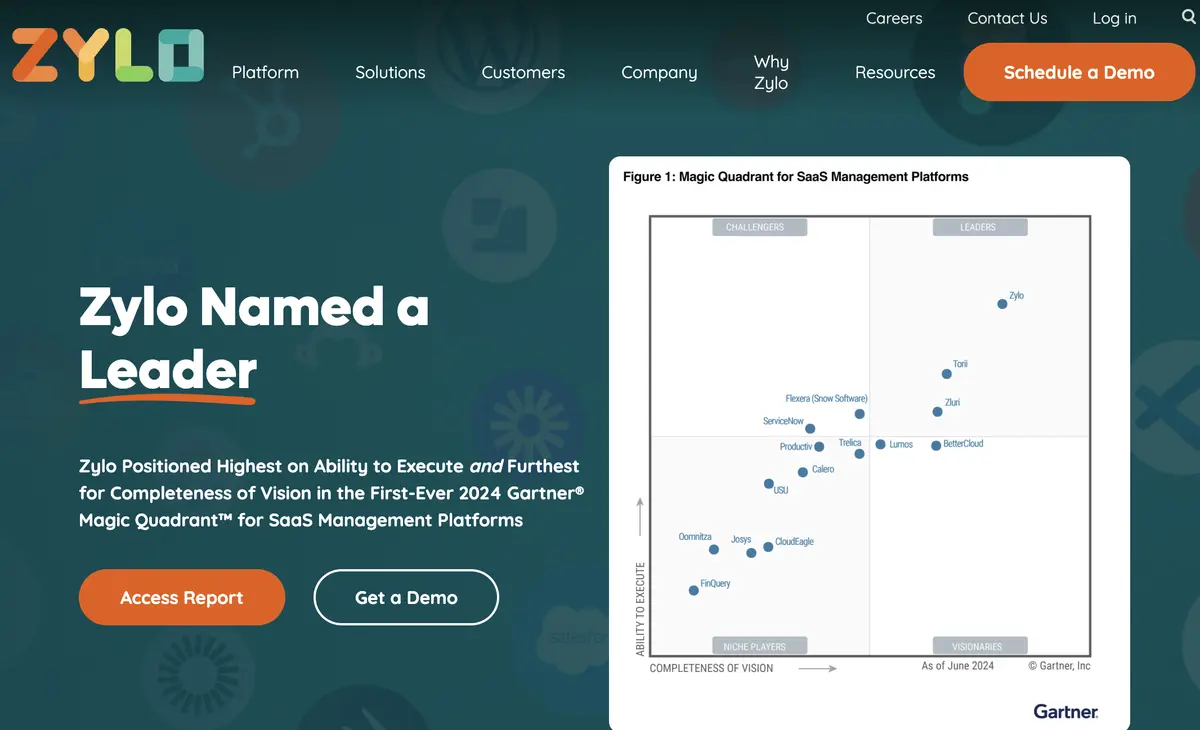
Zylo is an enterprise SaaS Management Platform that helps companies discover, manage, and optimize their software portfolios. The platform excels at SSO-based app discovery and provides deep benchmark data for contract negotiations.
Pros:
- Intuitive dashboard for identifying redundant spending
- Extensive benchmark data for SaaS spend
Trade-offs:
- Not an IT automation tool; focused on spend management
- Heavy dependence on SSO integrations for discovery, which limits real-time discovery
Bettercloud
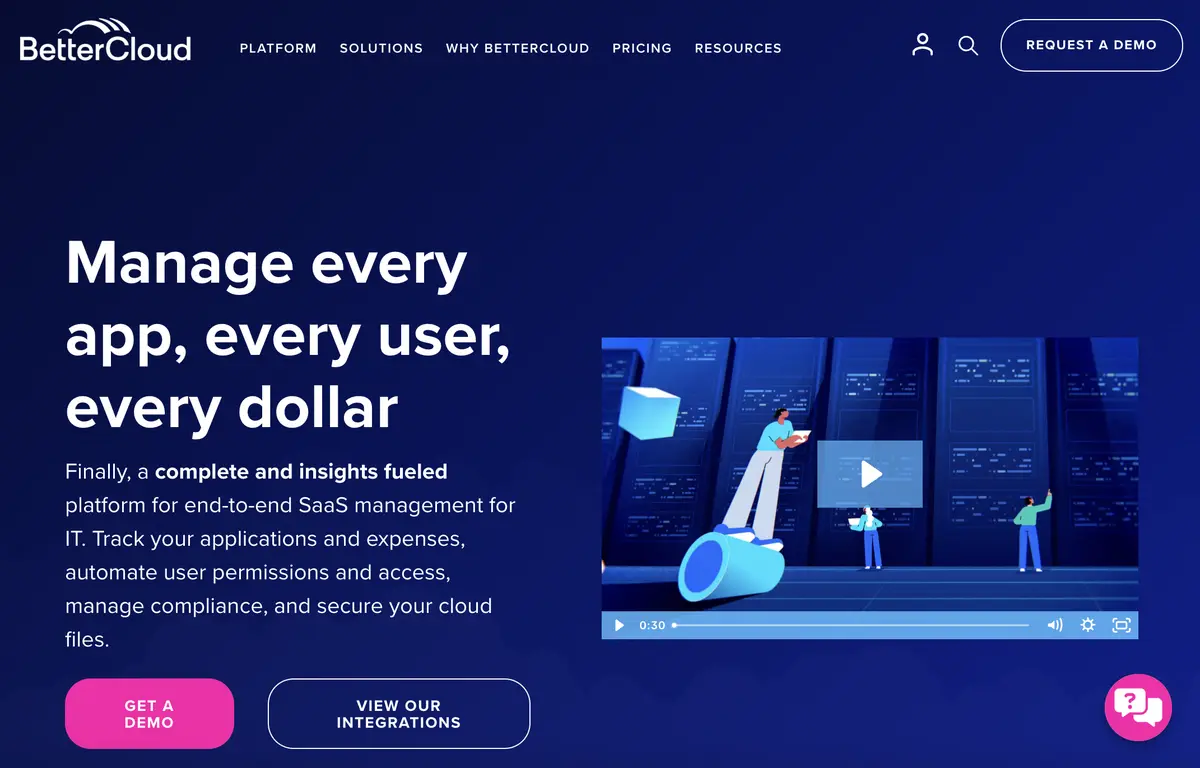
Bettercloud positions itself as the first end-to-end solution for IT teams to manage the SaaS user lifecycle. They provide centralized control of SaaS tools through a no-code workflow.
Pros:
- Excels at onboarding and offboarding automation
- Deep integration with core business tools like Google Workspace, Slack, and Salesforce
- Easy-to-use workflow builder
Trade-offs:
- Limited third-party integrations for niche SaaS applications
- Focused mainly on IT teams; doesn’t provide as robust contract negotiation and Shadow IT risk management as other tools
Lumos

Lumos considers itself the first autonomous identity SaaS Management Platform. They focus heavily on automating identity and access management, while also offering SaaS discovery and spend management.
Pros:
- Excels at Shadow IT discovery and ongoing access management
- Great SMP for Security teams
Trade-offs:
- While strong in governance and security, their IT automation and spend optimization features are not as robust as other leading SMPs
- Their third-party integrations have good coverage of business-critical tools, but not low-risk but high-spend platforms
What to expect from SaaS management moving forward
These are the most likely SaaS management changes in 2025-2027:
- The biggest change to SaaS management will be the proliferation of AI tools and consumption-based pricing (also called pay-as-you-go). Tracking Snowflake credits, OpenAI tokens, and pay-per-call APIs will become increasingly complex
- The rise of AI add-ons makes tracking SaaS costs more complex.
- SaaS tools previously reliant on licenses will test out consumption-based pricing
- AI protocols like MCP will make it easier to manage your SaaS tools directly from your chat widget
- Auditors will expect proof that every AI tool passes explainability and bias standards
Companies that invest in adaptive SaaS management platforms will stay ahead. Those that hold off may watch next quarter’s SaaS bill, security report, and compliance notes climb together.
Audit your company’s SaaS usage today
If you’re interested in learning more about SaaS Management, let us know. Torii’s SaaS Management Platform can help you:
- Find hidden apps: Use AI to scan your entire company for unauthorized apps. Happens in real-time and is constantly running in the background.
- Cut costs: Save money by removing unused licenses and duplicate tools.
- Implement IT automation: Automate your IT tasks to save time and reduce errors - like offboarding and onboarding automation.
- Get contract renewal alerts: Ensure you don’t miss important contract renewals.
Torii is the all-in-one SaaS Management Platform, providing a single source of truth across Finance, IT, and Security.
You can learn more about Torii here.
Frequently Asked Questions
SaaS management is the process of discovering, managing, and optimizing software-as-a-service applications within an organization to reduce costs and enhance security.
SaaS management helps eliminate wasted spend, mitigate security risks, ease IT burdens, and avoid missed contract renewals.
An effective SaaS management plan should include discovery and visibility, spend optimization, security and compliance measures, and workflow automation.
Yes, small teams can use manual methods or spreadsheets for SaaS management, but as complexity grows, dedicated tools become necessary.
When selecting a SaaS Management Platform, ensure it offers comprehensive discovery, real-time analytics, renewal alerts, and robust security features.
Neglecting SaaS management can lead to costs from zombie licenses, duplicate tools, security breaches, and decreased employee productivity.
A SaaS Management Platform centralizes the management of subscriptions, licenses, and users while providing actionable insights for cost reduction and security improvements.

